CONTENTS
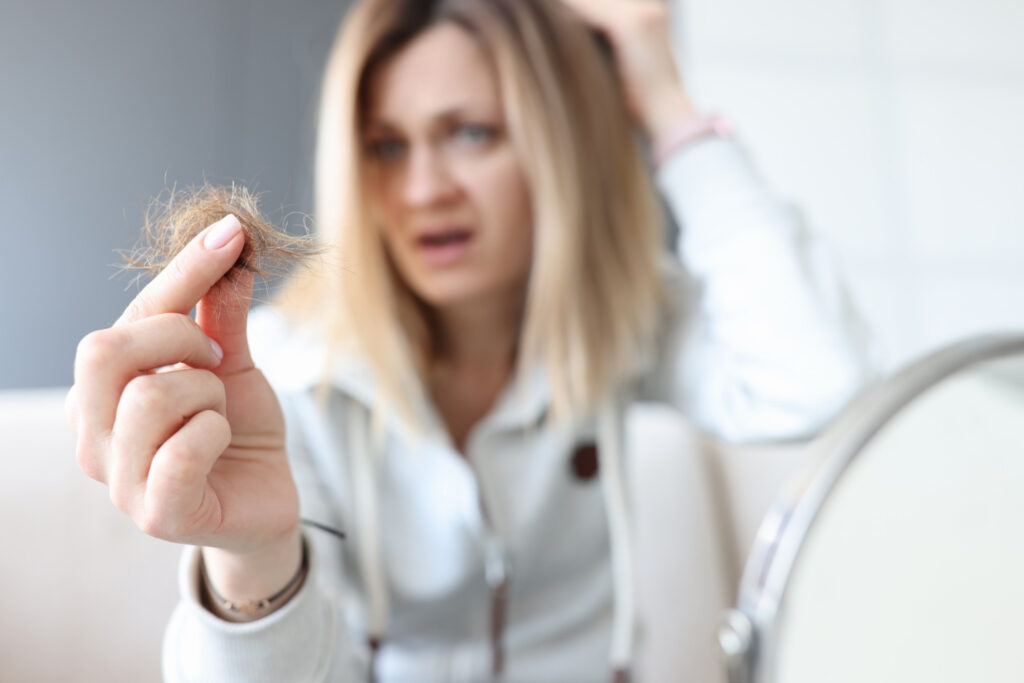
Before You Lose it All: Understanding Signs of Balding
Balding is a common thing experienced by many. Understanding the signs of balding is essential to maintaining a healthy and full head of hair.
For some, it can be hard to tell if they are starting to lose their hair. There are a few key signs that you should look out for to make sure you catch any signs of hair loss early.
Awareness of these signs can help create strategies to slow down or even stop the progression of balding before it becomes too advanced. Learn more about the signs of balding and its treatments here!
Causes, Treatment & Signs of Balding
Before noticing the signs of balding, you must first know the causes. After that, you can take proper treatments in the future. Read our full explanation!
Causes Of Balding
Family history (heredity)
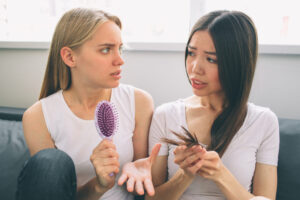
As individuals age, one of the most common causes of hair loss is a hereditary condition known as androgenic alopecia. Also referred to as male-pattern baldness and female-pattern baldness, this hair loss usually occurs gradually and follows a predictable pattern for each gender.
For example, men may experience a receding hairline and bald spots, while women may experience thinning along their crowns.
This condition is caused by a combination of genetics and hormones that, over time, can cause the individual’s hair follicle to shrink and become unable to support healthy hair growth.
Radiation therapy to the head

Radiation therapy is a cancer treatment that uses high radiation doses to kill cancer cells and shrink tumors. During this process, the radiation can also damage healthy cells, including those in the scalp.
This can lead to hair loss in the treated area and may even cause permanent balding if enough radiation is used. The amount of hair loss or balding will depend on factors such as the dose and duration of treatment and the type of radiation used.
Even if only some hair follicles are damaged by radiation, it may still lead to partial or complete baldness in that area over time.
Hormonal changes and medical conditions
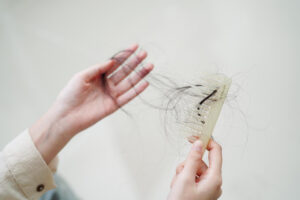
Hormonal fluctuations due to pregnancy, childbirth, menopause, and thyroid issues can lead to hair loss, as can medical conditions such as alopecia areata. This immune system disorder is characterized by patchy hair loss.
Scalp infections, including ringworm, may also lead to hair shedding and thinning.
In contrast, a compulsive habit of pulling one’s hair out, called trichotillomania, can lead to permanent bald spots or even overall baldness in some cases.
Hairstyles and treatments
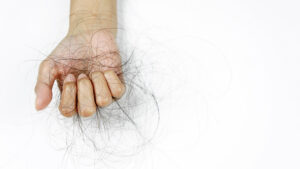
Excessive hairstyling, tight hairdos such as pigtails or cornrows, hot-oil treatments, and permanent styling can cause hair loss known as traction alopecia.
In some cases, scarring may occur due to these practices, leading to permanent hair loss. Other factors, such as chemical exposure, may also lead to an individual’s hair thinning or falling out.
Medications and supplements

Drugs used to treat conditions such as cancer, arthritis, depression, heart problems, gout, and high blood pressure can lead to hair loss as a side effect.
Medications like hormonal birth control have also been known to cause hair thinning or shedding in some individuals.
Thus, consulting with a healthcare professional before changing any medications causing this problem is essential.
Signs Of Balding
Receding hairline
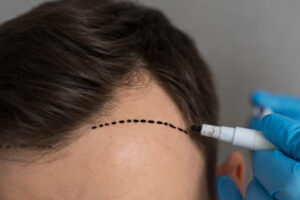
A receding hairline is a typical male pattern balding sign. It is typically characterized by a gradual thinning at the temple and crown areas, leaving an ‘M’ or ‘U’ shape of the remaining hair.
This hair loss usually starts around the age of 20-30 and gradually progresses until no more hair is left in the affected area.
Thinning on top of the head
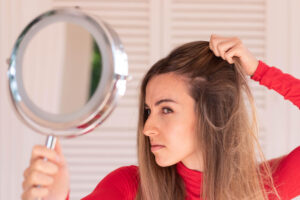
Hair loss can start with gradually thinning hair on the top of your head. This balding usually progresses slowly over time, often taking years before bald patches appear on the scalp.
Thinning temples
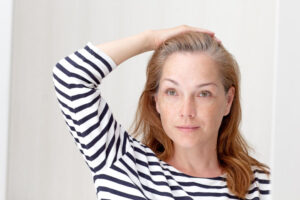
When you notice your hair vanishing around the temples, this is a sign of balding. You might also see that your mane isn’t as thick as it used to be.
Thinning across the whole head

For some people, hair loss occurs evenly across the whole head. There is no pattern or shape to the thinning of the hair, and it tends to be all-over in impact.
For males, a receding hairline is a common occurrence when it comes to losing their locks. However, thinning over the entire head is more likely to be seen in females.
Losing hair all over your body
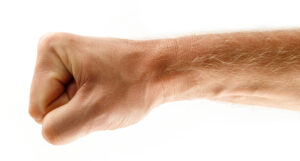
In fact, hair loss doesn’t only occur on your head. If you notice thinning of body hair or a lack of growth after shaving, this hair loss can be a symptom of some health conditions.
While it may be due to aging, it is essential to tell a doctor if you experience this hair loss. It could indicate something more serious; further investigation will help determine the cause.
How to Stop Balding
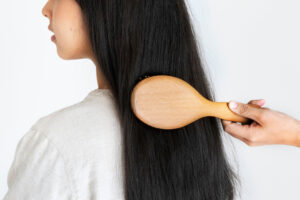
Finasteride
The FDA has approved one such treatment, Finasteride, an oral drug with anti-androgenic properties that reduce the production of DHT, the hormone causing hair loss.
You can choose between topical spray finasteride and the oral form of the drug. While there’s no guarantee that Finasteride will help regrow lost hair, some evidence suggests they have helped patients in the past.
Biotin Vitamins
Taking biotin vitamins is not a guaranteed solution to hair loss, but they can be beneficial and may help you get that extra boost.
Biotin aids in healthy hair growth, as demonstrated by a recent systematic review. If you suffer from a deficiency, these supplements for hair loss may help support your body’s natural processes and promote new growth.
Hair Thickening Shampoo
Apart from combating itchy scalps with dandruff prevention and regular cleansing, did you know using a nutrient-rich thickening shampoo can give your locks an extra boost?
Saw palmetto (or ketoconazole) is often the key ingredient in these types of shampoos, and it helps to thicken up the hair while keeping your scalp clean and healthy.
Stress Reduction
Research has found that stress can take a toll on your health in more ways than one. Not only does it sap your energy and make you feel sick and exhausted, but it can even cause hair loss.
Therefore, it is essential to control your stress to avoid hair loss — though it’s usually temporary.
Hair Transplantation Surgery
If you’re after results and have enough budget, hair transplant surgery might be something to consider.
Multiple types of hair transplants are available, although they tend to be pricey and can require a significant amount of recovery time.
Still, the procedure is designed to move healthy strands of hair from areas not affected by male pattern baldness and transplanted into areas that have lost their volume or are balding.
Ultimately, this medical procedure may give you back the hair you once had.
Frequently Asked Questions
What are the early signs of balding?
Some early signs of balding include excessive thinning, loss of hair on the top and front of your head, and a receding hairline. You may also see visible patches of the scalp where the hair starts to thin out or an overall decrease in the number of hairs coming out when you brush.
Is hair shedding a sign of balding?
Hair shedding can sometimes be a sign of balding, although it’s not an accurate indicator. While everyone typically sheds hair throughout the day, excessive shedding accompanied by thinning or bald patches can indicate the start of hair loss.
At what age do most people start experiencing signs of balding?
Generally, people start to experience signs of balding between 25 and 35. At this time, you may start noticing premature thinning and receding hairlines. However, balding can begin even sooner for some individuals.
Can balding be prevented or reversed?
In some cases, balding can be prevented or reversed with treatments such as medications, lifestyle changes, and surgical procedures.
Are there any health conditions that can cause signs of balding?
Yes, several health conditions can cause signs of balding, such as thyroid issues, hormonal imbalances, autoimmune disorders, people undergoing chemotherapy, and many more.
Conclusion
Overall, balding can be a troubling experience — both physically and mentally. However, it’s important to remember that baldness is manageable and isn’t necessarily permanent.
While it’s true that balding has several causes, proper treatment can still address these issues over time. Moreover, there are several options for treating hair loss that lacks any natural consequence or side effects.
Everyone needs to be aware of the warning signs and possible treatments. Don’t let your hair define you; rather, understand that it is an essential indicator of health that should not be overlooked. Taking control of your hair health can help you live a happier and fuller life!


